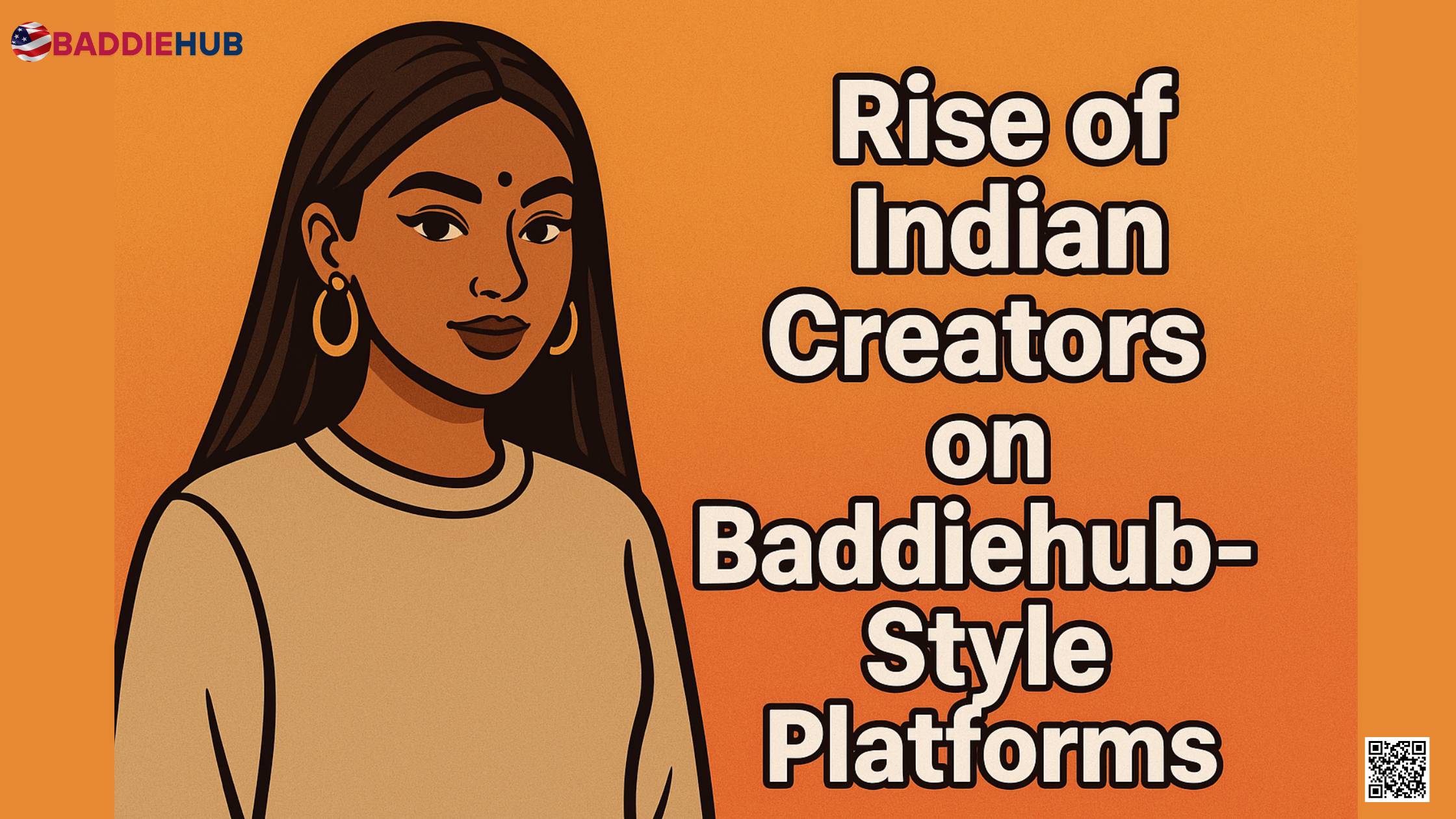Introduction: The Emergence of Indian Creators in Edgy Influencer Spaces
Indian creators are increasingly shaping edgy digital spaces similar to Baddiehub. “Baddiehub” refers not to a single platform but to a genre of bold online aesthetics originating from platforms like Instagram and TikTok.
India’s rapid digital adoption, driven by Gen Z, is fueling this movement. According to Datareportal, India had over 467 million social media users in 2023, creating fertile ground for edgy influencer spaces. Indian creators are leveraging the creator economy to build strong digital identities, penetrate niche fandoms, and enhance online visibility.

In the next section, the meaning and evolution of Baddiehub culture will be explored.
What is Baddiehub Culture?
Baddiehub culture symbolizes bold, unapologetic self-expression across digital platforms. It originated through aesthetic-driven communities on Instagram and TikTok, later spilling into subscription sites like OnlyFans.
The core traits include:
- Aesthetic niches: High-glam makeup, fashion-forward outfits, confident poses.
- Edgy content: Risk-taking in terms of fashion, opinions, and visual storytelling.
- Algorithm-driven fame: Viral loops created through TikTok’s recommendation system.
Platforms reward bold branding and content monetization, allowing creators to profit through aesthetic dominance. Baddie influencers strategically capitalize on viral formats, often blending into the e-girl subculture.
Example: Kylie Jenner and Doja Cat epitomize early Western baddie aesthetics, while Indian creators are now interpreting these visuals through a desi lens.
Next, the specific role of Indian creators adapting this culture will be detailed.
Indian Representation on Baddiehub-Style Platforms
Indian content creators are creatively adapting Baddiehub culture while preserving their unique cultural contexts. Language mixing, especially Hinglish, is common. Creators use dual-language captions to connect with broader audiences.
Redefining Indian beauty standards is pivotal. Traditional Bollywood-centric looks are giving way to diverse features, skin tones, and body positivity. This shift highlights a digital identity crisis, where creators balance Western trends with desi representation.
Examples:
- Dolly Singh fuses satire with edgy fashion.
- Sakshi Shivdasani plays with bold aesthetics while incorporating Hindi pop culture references.
Attributes of Indian adaptation:
- Regional fame built through local memes and trends.
- Pan-Indian appeal through mixing South Indian, Punjabi, and Bollywood motifs.
The section ahead discusses the cultural sensitivities Indian creators face.
Ethical Concerns and Cultural Sensitivity
Indian edgy influencers navigate a complicated matrix of traditional values and modern expression. The tension often sparks morality debates, especially in conservative online spaces.
Content policing remains significant. Platforms and governments enforce censorship laws under the pretext of protecting cultural norms. According to IAMAI, over 62% of young Indian creators believe current digital regulations limit creative freedom.
Taboo boundaries include:
- Explicit content.
- Political commentary.
- Breaking gender norms.
Generational gaps exacerbate the friction. While Gen Z values freedom of expression, older generations often view baddiehub-style personas as cultural degradation.
Creators like Kusha Kapila have faced backlash for pushing moral panic buttons. This balancing act between rebellion and responsibility will be key in the following monetization-focused section.
Monetization and Popularity
Indian creators strategically monetize bold content through diversified revenue streams. Traditional ad revenue is supplemented by Patreon, brand collaborations, and affiliate marketing.
Main monetization tactics:
- Paid subscriptions for exclusive content on platforms like Instagram’s Subscriber Stories.
- Affiliate links tied to edgy fashion brands or beauty products.
- Sponsorship deals with international beauty or lifestyle companies.
The digital hustle reflects the new creator economy India. A 2024 Statista report found that 26% of Indian influencers earn between ₹50,000 to ₹2,00,000 per month from content.
Engagement loops built through interactive polls, AMA sessions, and BTS reels increase visibility tactics, ensuring a steady follower influx.
In the next part, comparisons between Indian and Western baddie creators are made.
Platform Comparisons: Indian vs Western Creators
Indian creators differ significantly from their Western counterparts on Baddie hub-like platforms. Content regulation is tighter in India, leading to self-censorship.
Key differences include:
| Aspect | Indian Creators | Western Creators |
| Content Freedom | Moderately censored | Largely uncensored |
| Language | Multilingual (Hinglish, Tamil, etc.) | Primarily English |
| Cultural Reference | Bollywood, Cricket, Indian memes | Hollywood, Western memes |
| Audience Sensitivity | High regarding nudity and political issues | Lower sensitivity levels |
Cross-cultural adaptation occurs as Indian creators emulate Western aesthetics while tweaking for regional tastes. Indian platforms like Instagram India and YouTube India promote localized content to match evolving norms.
The evolution towards a culturally hybrid model sets the stage for the future of Indian baddie culture, which will be discussed next.
Future of Indian “Baddie” Culture
The future points toward localization of global trends. Indian Gen Z creators are poised to dominate digital spaces through platforms designed for desi audiences.
Forecast trends:
- Rise of desi platforms like Moj and Josh.
- AI avatars and virtual influencers representing edgy identities without real-world consequences.
- Cultural hybridization where Indian traditions merge with global digital aesthetics.
According to Tracxn, India saw a 35% increase in funding for creator economy startups in 2023, highlighting the momentum.
Creators such as Rashmika Mandanna and Prajakta Koli already experiment with metaverse appearances and virtual collaborations, signaling a vibrant desi digital future.
Key Takeaways from the Rise of Indian Creators on Baddiehub-Style Platforms
- Baddiehub culture signifies bold digital self-expression.
- Indian influencers reinterpret this style to fit desi norms.
- Censorship and cultural taboos shape content boundaries.
- Monetization paths are diverse, combining direct income and brand deals.
- Future trends show the merging of Indian traditions with global digital aesthetics.
Next we will explore Baddiehub Asian
